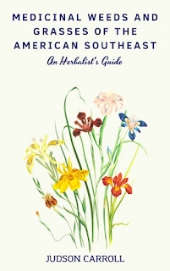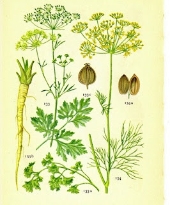
Arundinaria, Cane
Only one variety of Arundinaria has documented use in western Herbal Medicine: Arundinaria gigantea
Three are native to my region: Arundinaria appalachiana (Hill Cane), Arundinaria gigantea (Giant Cane), Arundinaria tecta (Switch Cane). All of these canes are in the grass family and very similar.
Plants for A Future tells us, “Medicinal use of Cane Reed (Arundinaria gigantea): The root is cathartic. A decoction has been used to stimulate the kidneys and "renew strength".
The PDR for Herbal Medicine states:
Bamboo is seldom used for medicinal purposes in Western Medicine. In Indian Medicine, the drug is used for asthma, arthritis and coughs.

Asimina Parviflora, Dwarf Pawpaw
This is the smaller, shrub-form version of the Pawpaw tree. Pawpaw is another of our uniquely native plants. I’d love to tell you it has all kinds of impressive, medicinal properties… and it does have some… but its main value is its fruit. The Pawpaw is our native “tropical” fruit that grows in temperate regions. It was long considered a variety of papaya, but it is a unique and distinct tree. Sometimes called the Custard Apple, this fruit has a mild tropical flavor, and grows best in the mountains and hills. It is a smallish tree, one that inhabits the under-story. It would be far more common were it not for the practices of real estate and forestry that clear the understory, in favor of tall trees for timber and landscape. Pawpaws like a mixed forest, not a park-like setting or a timber stand.
Two other factors have led to the Pawpaw falling out of favor as a favorite American fruit. The first is simply that knowledge of this fruit has not been passed down through the generations as it was in earlier times. If only we still had intact families, where grandparents and parents took the kids into the woods and meadows to teach them about wild edible and medicinal plants! If families still spent such time together, foraging, hunting, fishing, trapping and gardening, we would likely have far more intact families! The second has to do with market forces. The fruit and vegetables we see in modern grocery stores are not offered for their flavor or nutritional value. No, modern produce is chosen specifically for its ability to withstand shipping long distances while still appearing fresh, and its shelf life. The tomato you buy was likely shipped thousands of miles. The fruit you buy may have come even further. The watermelon is by no means the full flavored, vitamin packed watermelon our grandparents enjoyed… it is chosen for its tough, thick rind and uniform appearance. That it has little flavor is of little concern to modern agri-business. Pawpaws are delicious fruit, but they will not stand shipping. Their shelf life is similar to a ripe banana. They make a fine fruit for local farmer’s markets and roadside fruit stands, but rarely, if ever, will you see them in a grocery store.
As for medicinal use, the fruit is laxative when eaten in large amounts. The leaves are diuretic, and make a good poultice for wounds, boils, infections and inflammations. The bark may be used as a digestive bitter. There is also some history of use as a wash in cases of head lice.
Of the seeds, Mrs. Grieves writes:
Emetic, for which a saturated tincture of the bruised seeds is employed, dose, 10 to 60 drops. The bark is a bitter tonic and is said to contain a powerful acid, the leaves are used as an application to boils and ulcers.
Pawpaw trees may be purchased from many nurseries that specialize in fruit trees or who cater to Permaculture folks. I hope my readers will consider planting Pawpaws. I’d love to see some of these natives that are becoming all too rare become popular – A Pawpaw, Persimmon and Passionfruit vine in every yard!
Resources of the Southern Fields and Forests states:
Grows in rich soils along streams. I have observed it in Fairfield and Spartanburg districts, South Carolina, and collected it in St. John’s; Mr. Elliott says it is found at Beck's ferry, Savannah river, and North Carolina. Fl. May. Diet, de Mat. Med par Mer and de L. tom. i, 311.
The rind of the fruit of the A. triloba of Linn, possesses a very active acid; pulp sometimes employed as a topical application in ulcers. Lind. Nat. Syst. Bot. 69. "Juice of unripe fruit is a powerful and efficient vermifuge; the powder of the seeds answers the same purpose; a principal constituent of the juice is fibrin—a product supposed peculiar to animal substances and to fungi." " The tree has, moreover, the property of rendering the toughest animal substances tender by causing a separation of the muscular fibre—its very vapor even does this; newly killed meat suspended over the leaves, and even old hogs and poultry, when fed on the leaves and fruit, become ' tender in a few hours!' " Lind. loc. cit. The sap of the Papaw tree, {Carica papaya), which is extracted from the fruit by incision, is white and excessively viscous.
In a specimen from the Isle of France, Yauquelin found a matter having the chemical properties of animal albumen, and lastly, fatty matter. Boussingault. This tree can be found in many parts of the South and I would invite examination into these very curious properties. For an excellent description of the Papaw, see Hooker in the Bot. Magazine, 808. At Pittsburgh, a spirituous liquor has been made from the fruit. Michaux notices that the cellular integument of the bark, and particularly that of the roots, exhales in summer a nauseous odor so strong as to occasion sickness if re- spired in confined air. Am. Sylva.
King's American Dispensatory, 1898 tells us Pawpaw:
Action, Uses, and Dosage.—Emetic, for which purpose a saturated tincture of the bruised seeds is employed, in doses of from 10 to 60 drops. The bark is said to be a bitter tonic and has been used as such in domestic practice. The medical properties of this agent have not been fully Investigated.
Peterson Field Guides Eastern and Central Medicinal Plants tells us:
Fruit edible, delicious; also a laxative. Leaves insecticidal, diarrhetic; Applied to abscesses. Seeds emetic, narcotic producing stupor. The powdered seeds, formally applied to the heads of children to control lice, having insecticidal properties. Warning: seeds toxic. Leaves may cause rash.
This article is an excerpt from
Medicinal Shrubs and Woody Vines of The American Southeast An Herbalist's Guide
Read about Medicinal Shrubs and Woody Vines of The American Southeast An Herbalist's Guide:
https://southernappalachianherbs.blogspot.com/2022/06/medicinal-shrubs-and-woody-vines-of.html
Available for purchase on Amazon:
https://www.amazon.com/dp/B0B2T4Y5L6: by Judson Carroll
His New book is:

Read About: The Medicinal Weeds and Grasses of the American Southeast
https://southernappalachianherbs.blogspot.com/2023/05/medicinal-weeds-and-grasses-of-american.html
Available in paperback on Amazon:
https://www.amazon.com/dp/B0C47LHTTH
His new cookbook is:

Read About The Omnivore’s Guide to Home Cooking for Preppers, Homesteaders, Permaculture People and Everyone Else"
https://southernappalachianherbs.blogspot.com/2022/10/the-omnivores-guide-to-home-cooking-for.html
Available for purchase on Amazon:
https://www.amazon.com/dp/B0BGKX37Q2
His other works include:
Confirmation, an Autobiography of Faith
Read about Confirmation, an Autobiography of Faith
https://southernappalachianherbs.blogspot.com/2023/05/confirmation-autobiography-of-faith.html
Available in paperback on Amazon:
https://www.amazon.com/dp/B0C47Q1JNK
Ferns and Fern Allies, an Herbalist's Guide
Read About Ferns and Fern Allies, an Herbalist's Guide
https://southernappalachianherbs.blogspot.com/2022/11/medicinal-ferns-and-fern-allies.html
Available for purchase on Amazon:
https://www.amazon.com/dp/B0BMSZSJPS
Growing Your Survival Herb Garden for Preppers, Homesteaders and Everyone Else
Read About Growing Your Survival Herb Garden for Preppers, Homesteaders and Everyone Else:
http://southernappalachianherbs.blogspot.com/2022/04/growing-your-survival-herb-garden-for.html
Available for purchase on Amazon:
https://www.amazon.com/dp/B09X4LYV9R
The Encyclopedia of Bitter Medicinal Herbs:
southernappalachianherbs.blogspot.com/2022/03/the-encyclopedia-of-bitter-medicina.html
Available for purchase on Amazon:
https://www.amazon.com/dp/B0B5MYJ35R
Christian Medicine, History and Practice:
https://southernappalachianherbs.blogspot.com/2022/01/christian-herbal-medicine-history-and.html
Available for purchase on Amazon: www.amazon.com/dp/B09P7RNCTB
Herbal Medicine for Preppers, Homesteaders and Permaculture People
southernappalachianherbs.blogspot.com/2021/10/herbal-medicine-for-preppers.html
Also available on Amazon:
https://www.amazon.com/dp/B09HMWXL25
Look Up: The Medicinal Trees of the American South, An Herbalist's Guide
http:///www.amazon.com/dp/1005082936
The Herbs and Weeds of Fr. Johannes Künzle:
https://southernappalachianherbs.blogspot.com/2021/05/announcing-new-book-herbs-and-weeds-of.html
Author: Judson Carroll. Judson Carroll is an Herbalist from the Blue Ridge Mountains of North Carolina.
His weekly articles may be read at judsoncarroll.com
His weekly podcast may be heard at: www.spreaker.com/show/southern-appalachian-herbs
He offers free, weekly herb classes:
https://rumble.com/c/c-618325
Disclaimer
The information on this site is not intended to diagnose or treat any disease or condition. Nothing on this site has been evaluated or approved by the FDA. I am not a doctor. The US government does not recognize the practice of herbal medicine and their is no governing body regulating herbalists. Therefore, I'm just a guy who studies herbs. I am not offering any advice. I won't even claim that anything I write is accurate or true! I can tell you what herbs have "traditionally been used for." I can tell you my own experience and if I believe an herb helped me. I cannot, nor would I tell you to do the same. If you use any herb I, or anyone else, mentions you are treating yourself. You take full responsibility for your health. Humans are individuals and no two are identical. What works for me may not work for you. You may have an allergy, sensitivity or underlying condition that no one else shares and you don't even know about. Be careful with your health. By continuing to read my blog you agree to be responsible for yourself, do your own research, make your own choices and not to blame me for anything, ever.

 3
3












